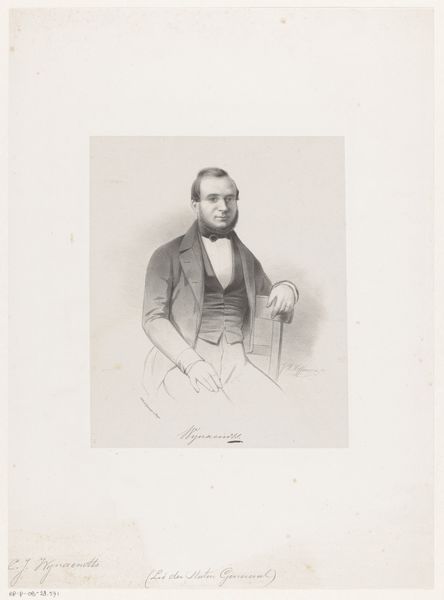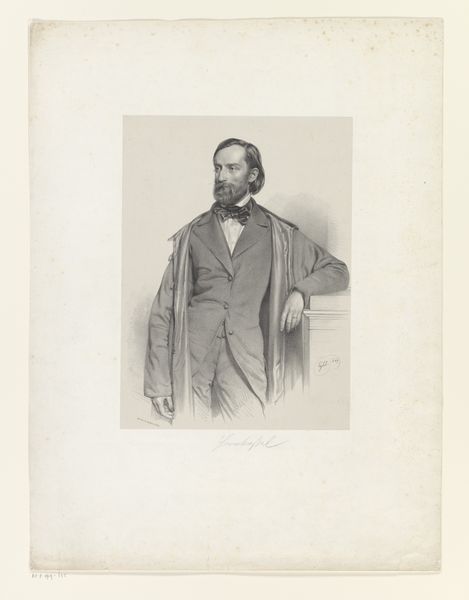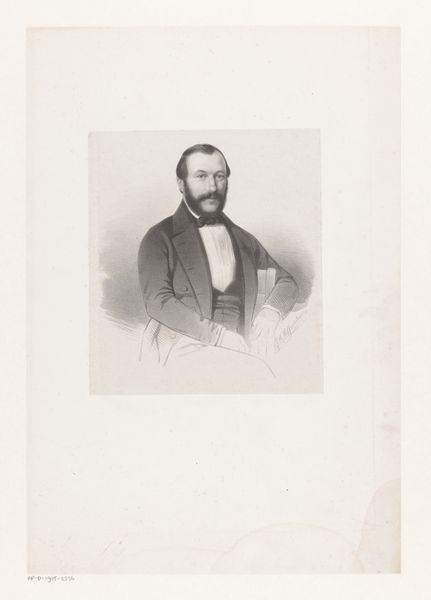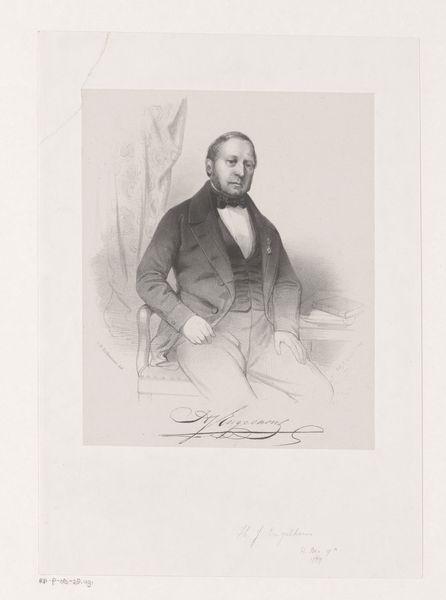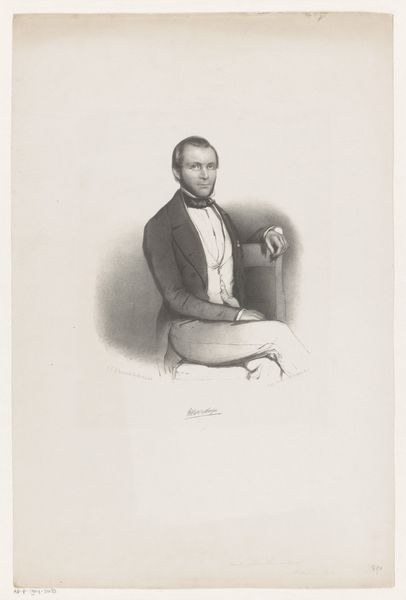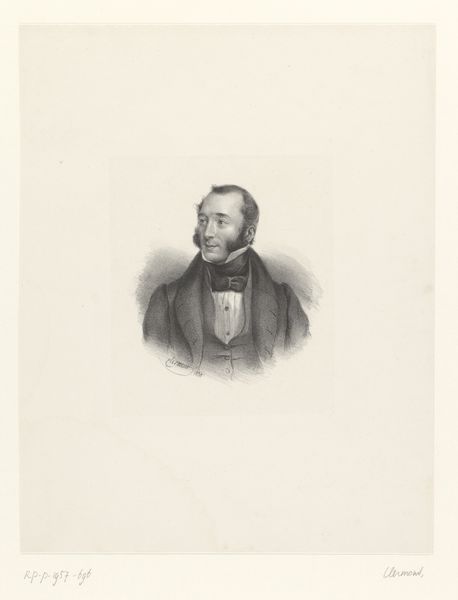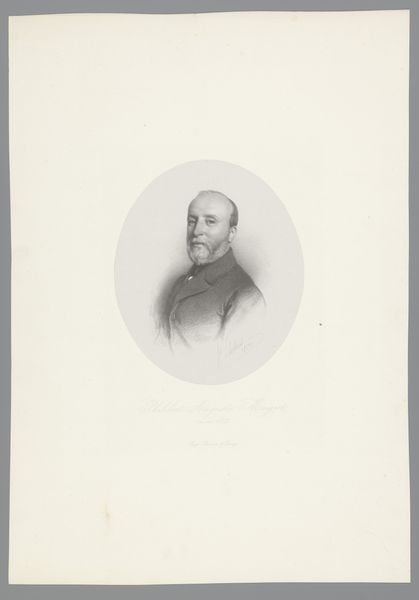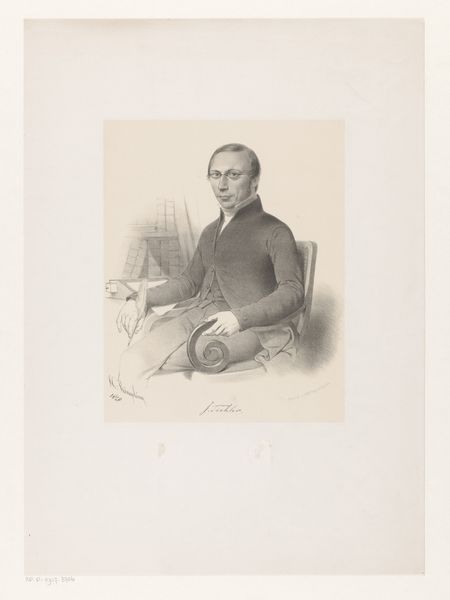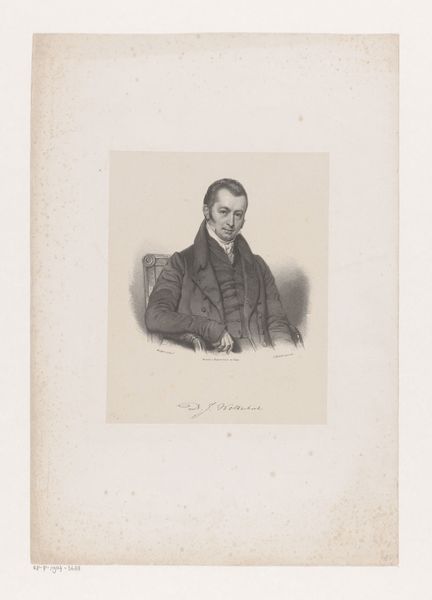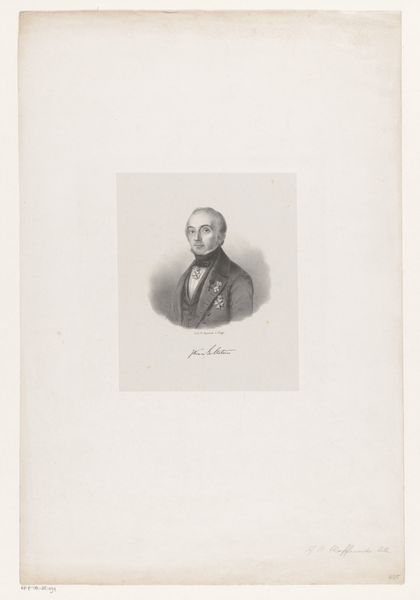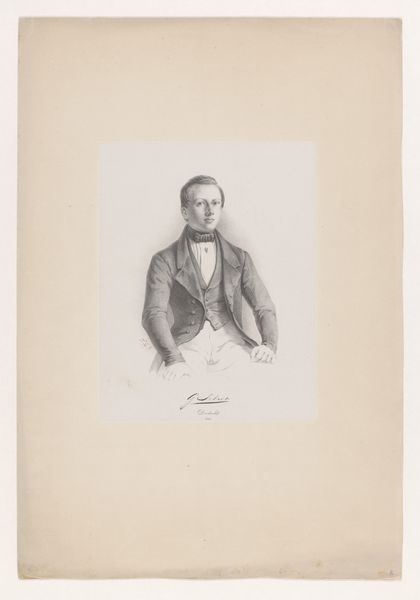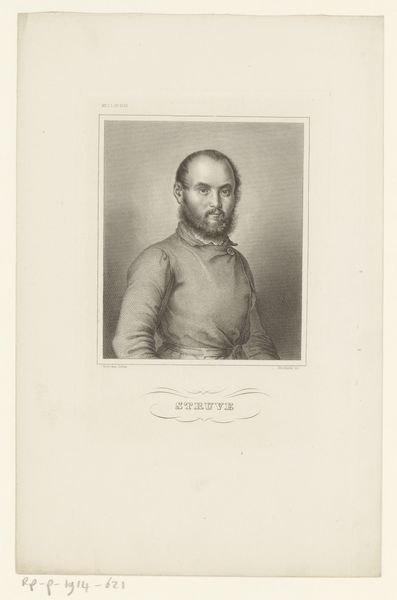
#
portrait
# print
#
genre-painting
#
academic-art
#
realism
Dimensions: height 625 mm, width 461 mm
Copyright: Rijks Museum: Open Domain
Editor: Here we have a print from sometime between 1849 and 1870, “Portret van een onbekende man met hoge hoed in de hand” – Portrait of an unknown man with a top hat in his hand – currently held at the Rijksmuseum. The realism really comes through despite the limited color palette. How do you interpret this work? Curator: I see a powerful assertion of bourgeois identity. The very act of commissioning a portrait like this was a statement. Who had access to that kind of representation and why? He’s displaying all the visual codes of class – the cut of his clothes, his posture, even the subtle suggestion of wealth in his accessories. But also consider who *doesn't* have access to this kind of visibility. What stories aren't being told here? Editor: That’s fascinating. So, you're saying that this portrait isn’t just about one man, but it reflects broader social dynamics of the time? Curator: Exactly! Look at the era: post-1848 revolutions. The middle class is solidifying its power. Portraits became a way to visually assert their place in society. Consider this in dialogue with the rising visibility of the working class. How might this image have been viewed differently by different social groups at the time? Editor: It makes you wonder about the people behind the camera, too, their biases and intentions. Curator: Precisely. And about our own biases in viewing it today! What assumptions do *we* bring to this image? Editor: I never considered portraiture from that viewpoint before. It's more complex than I initially thought. Curator: Art always is, isn't it? Seeing beyond the surface reveals these deeper dialogues about power, representation, and identity.
Comments
No comments
Be the first to comment and join the conversation on the ultimate creative platform.
